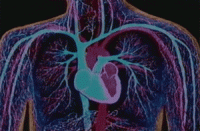-
A better way to identify gait differences
Biometric-based person recognition methods have been extensively explored for various applications, such as access control, surveillance, and forensics. Gait is a practical trait for video-based surveillance and forensics because it can be captured at a distance on video. In fact, gait recognition has been already used in practical cases in criminal investigations. However, gait recognition is susceptible to intra-subject variations, such as view angle, clothing, walking speed, shoes, and carrying status. Such hindering factors have prompted many researchers to explore new approaches with regard to these variations.
-
-
The challenge of authenticating real humans in a digital world

There are three main ways of proving an identity. One involves something you know – like a password or your mother’s maiden name. A second method of authentication is with something you have – such as a key to your home’s front door or a smart card to swipe at work. A third way is by digitally authenticating the individual human being – who you are – with some aspect of your biology. This increasing dependence on digital authentication may actually result in less security. While cameras, sensors and other devices can make authentication easier for people to accomplish, they carry their own weaknesses. It may be more convenient, and even more secure, than a magnetic strip on a plastic card in your wallet. But the potential dangers will require much higher security for private information, particularly biometric data. A real identity still comes down to flesh and blood.
-
-
DNA techniques could transform facial recognition technology
Camera-based visual surveillance systems were supposed to deliver a safer and more secure society. But despite decades of development, they are generally not able to handle real-life situations. During the 2011 London riots, for example, facial recognition software contributed to just one arrest out of the 4,962 that took place. The failure of this technology means visual surveillance still relies mainly on people sitting in dark rooms watching hours of camera footage, which is totally inadequate to protect people in a city. But recent research suggests video analysis software could be dramatically improved thanks to software advances made in a completely different field: DNA sequence analysis. By treating video as a scene that evolves in the same way DNA does, these software tools and techniques could transform automated visual surveillance.
-
-
Scientific basis of fingerprints too weak for legal certainty
It may surprise many, especially those susceptible to the CSI effect, but fingerprint evidence is not conclusive beyond a reasonable doubt. A new American Association for the Advancement of Science (AAAS) working group report on the quality of latent fingerprint analysis says that courtroom testimony and reports stating or even implying that fingerprints collected from a crime scene belong to a single person are indefensible and lack scientific foundation.
-
-
“Cardiac password” project uses the wave of the heart motion for authentication
One of the unique features for the upcoming iPhone X is facial recognition security, where users can simply unlock their phones by holding it up to their face and allowing the phone’s security measures to identify the correct user. However, it seems just as soon as new means of authentication are developed and put into use, hackers find a way around them, from hacking passwords to faking fingerprints to fool biometric security systems. But there may be one authentication method that cannot be hacked: Cardiac password.
-
-
Voice forensics to help Coast Guard nab hoax callers
The U.S. Coast Guard receives more than 200 false distress calls a year over its Very High Frequency (VHF) radio channel 16—the mariner’s “911”—and the number is growing. These false calls are not simply a nuisance: Every distress call the Coast Guard receives compels the federal agency to launch an expensive search-and-rescue effort. In December 2014, DHS S&T connected the Coast Guard with Dr. Rita Singh of Carnegie Mellon University to see whether a voice forensic technology could be developed which would glean information from the caller’s audio signal — because this was the only evidence the Coast Guard had in cases of false distress calls.
-
-
Forget login, fingerprint, or retinal scan: Your heart is the new identifier.

Forget fingerprint computer identification or retinal scanning. Researchers have developed a computer security system using the dimensions of your heart as your identifier. The system uses low-level Doppler radar to measure your heart, and then continually monitors your heart to make sure no one else has stepped in to run your computer. This new non-contact, remote biometric tool could be the next advance in computer security.
-
-
How does your cellphone know whether your finger is real or a fake?
Do you know how safe it is to use your finger as a security login? And have you wondered how your cell phone knows if your finger is real or a fake? Researchers are working to answer these questions and solve the biggest problems facing fingerprint recognition systems today: how secure they are and how to determine whether the finger being used is actually a human finger.
-
-
Touch-free fingerprint scanners
Balancing speed and security at the airport is essential to ensuring safe, reliable travel. DHS S&T and TSA are evaluating new identity verification technology that can reduce the time it takes for travelers to pass through security. The touch-free scanners allow a traveler’s fingerprints to serve as their boarding pass and identity document.
-
-
Blood vessels prove you are who you say you are
Biometric screening — using biological characteristics such as fingerprints, iris recognition or facial features — is a high priority for researchers who are working to develop future security solutions. Researchers have found a way to identify people through finger vein recognition. This authentication system shows promise as a more secure passport control method.
-
-
Better technologies help first responders respond more quickly, safely, and effectively
When disaster strikes, first responders rush in to provide assistance. In addition to their courage and training, they depend on a panoply of technologies to do their jobs. Pacific Northwest National Laboratory has partnered with emergency management and public safety professionals to define, develop, test and deploy these technologies to improve response and recovery. The Lab also applies its scientific capabilities to assess emergencies as they unfold.
-
-
Rapid DNA technology verifies relationships after mass casualty events
Rapid DNA technology developed by DHS S&T has recently been used to identify simulated “victims” in several mass casualty exercises across the United States. The technology greatly expedites the testing of deoxyribonucleic acid (DNA), the only biometric that can accurately verify family relationships.
-
-
Rapid DNA technology verifies relationships after mass casualty events
Rapid DNA technology developed by DHS S&T has recently been used to identify simulated “victims” in several mass casualty exercises across the United States. The technology greatly expedites the testing of deoxyribonucleic acid (DNA), the only biometric that can accurately verify family relationships.
-
-
Germany testing face-recognition software to help police spot terrorists
Germany will be testing facial recognition software at a Berlin train station this summer to see whether it can assist police identify terror suspects more quickly. Volunteers will help police test the software at Berlin’s Suedkreuz station. If the test is successful, the use of the biometric software would be expanded to other locations, and also used to help police identify criminals, not only people suspected of terrorist activities.
-
-
New tool spots fake online profiles
People who use fake profiles online could be more easily identified, thanks to a new tool developed by computer scientists. Researchers have trained computer models to spot social media users who make up information about themselves — known as catfishes. The system is designed to identify users who are dishonest about their age or gender. Scientists believe it could have potential benefits for helping to ensure the safety of social networks.
-
- All
- Regional
- Water
- Biometrics
- Borders/Immig
- Business
- Cybersecurity
- Detection
- Disasters
- Government
- Infrastructure
- International
- Public health
- Public Safety
- Communication interoperabillity
- Emergency services
- Emergency medical services
- Fire
- First response
- IEDs
- Law Enforcement
- Law Enforcement Technology
- Military technology
- Nonlethal weapons
- Nuclear weapons
- Personal protection equipment
- Police
- Notification /alert systems
- Situational awareness
- Weapons systems
- Sci-Tech
- Sector Reports
- Surveillance
- Transportation
Advertising & Marketing: advertise@newswirepubs.com
Editorial: editor@newswirepubs.com
General: info@newswirepubs.com
2010-2011 © News Wire Publications, LLC News Wire Publications, LLC
220 Old Country Road | Suite 200 | Mineola | New York | 11501
Permissions and Policies
Editorial: editor@newswirepubs.com
General: info@newswirepubs.com
2010-2011 © News Wire Publications, LLC News Wire Publications, LLC
220 Old Country Road | Suite 200 | Mineola | New York | 11501
Permissions and Policies
